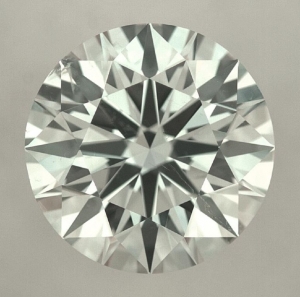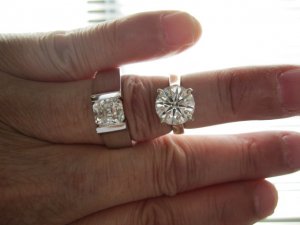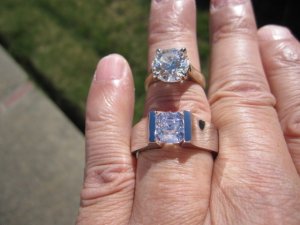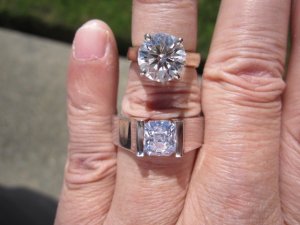Hi All,
Recently I came across this diamond.
Below are the stats:
Carat: ??
Colour: G
Clarity: SI1
GIA Triple Ex
Table: 55%
Depth: 61.5%
Crown angle: 34%
Crown %: 15%
Pavilion angle: 40.8%
Pavilion %: 43%
Star: 50%
LGF: 80%
Girdle: M-STK (3.5%)
Dimensions are appropriate for its carat weight
Fluorescence: Strong Blue
Clarity characteristics: Twinning Wisp, Feather
Picture below

Price is 15-17% cheaper compared to other G SI1 GIA Triple Ex around similar weight within similar tight angles from the same vendor.
Other details: eye clean, the SBF doesn't make it look oily/cloudy, located in India.
Don't have IS & ASET scope.
Have been in the market for just over a month.
First saw it last week, then saw it marked unavailable two days later, then available again.
Looks like the feather on 10:30 o'clock is easily prongable.
I read somewhere that SBF can affect the price between 5%-15%.
But if it doesn't have noticeable impact on its appearance (not even outside when it's sunny but the sun is covered by clouds?), is it just the SBF that affects its price significantly? Or is this still normal?
What's the black area under the table at 10, 11:30 and 12:30? Just shadows of the camera? Is that normal?
Recently I came across this diamond.
Below are the stats:
Carat: ??
Colour: G
Clarity: SI1
GIA Triple Ex
Table: 55%
Depth: 61.5%
Crown angle: 34%
Crown %: 15%
Pavilion angle: 40.8%
Pavilion %: 43%
Star: 50%
LGF: 80%
Girdle: M-STK (3.5%)
Dimensions are appropriate for its carat weight
Fluorescence: Strong Blue
Clarity characteristics: Twinning Wisp, Feather
Picture below

Price is 15-17% cheaper compared to other G SI1 GIA Triple Ex around similar weight within similar tight angles from the same vendor.
Other details: eye clean, the SBF doesn't make it look oily/cloudy, located in India.
Don't have IS & ASET scope.
Have been in the market for just over a month.
First saw it last week, then saw it marked unavailable two days later, then available again.
Looks like the feather on 10:30 o'clock is easily prongable.
I read somewhere that SBF can affect the price between 5%-15%.
But if it doesn't have noticeable impact on its appearance (not even outside when it's sunny but the sun is covered by clouds?), is it just the SBF that affects its price significantly? Or is this still normal?
What's the black area under the table at 10, 11:30 and 12:30? Just shadows of the camera? Is that normal?







300x240.png)